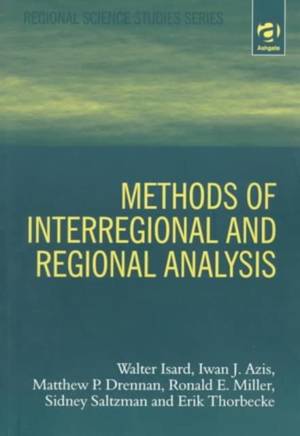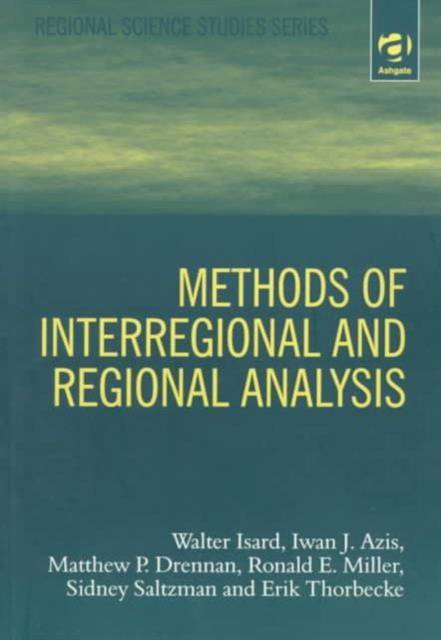
- Afhalen na 1 uur in een winkel met voorraad
- Gratis thuislevering in België vanaf € 30
- Ruim aanbod met 7 miljoen producten
- Afhalen na 1 uur in een winkel met voorraad
- Gratis thuislevering in België vanaf € 30
- Ruim aanbod met 7 miljoen producten
Zoeken
Methods of Interregional and Regional Analysis
Walter Isard, Iwan J Azis, Matthew P Drennan, Ronald E Miller, Sidney Saltzman, Erik Thorbecke
€ 64,95
+ 129 punten
Omschrijving
This landmark textbook introduces students to the principles of regional science and focuses on the key methods used in regional analysis, including regional and interregional input-output analysis, econometrics (regional and spatial), programming and industrial and urban complex analysis, gravity and spatial interaction models, SAM and social accounting (welfare) analysis and applied general interregional equilibrium models. The coherent development of the materials contained in the set of chapters provides students with a comprehensive background and understanding of how to investigate key regional problems. For the research scholar, this publication constitutes an up-to-date source book of the basic elements of each major regional science technique. More significant, it points to new directions for future research and ways interregional and regional analytic approaches can be fused to realise much more probing attacks on regional and spatial problems - a contribution far beyond what is available in the literature.
Specificaties
Betrokkenen
- Auteur(s):
- Uitgeverij:
Inhoud
- Aantal bladzijden:
- 514
- Taal:
- Engels
- Reeks:
Eigenschappen
- Productcode (EAN):
- 9781859724101
- Verschijningsdatum:
- 29/10/1998
- Uitvoering:
- Paperback
- Formaat:
- Trade paperback (VS)
- Afmetingen:
- 220 mm x 153 mm
- Gewicht:
- 703 g

Alleen bij Standaard Boekhandel
+ 129 punten op je klantenkaart van Standaard Boekhandel
Beoordelingen
We publiceren alleen reviews die voldoen aan de voorwaarden voor reviews. Bekijk onze voorwaarden voor reviews.











